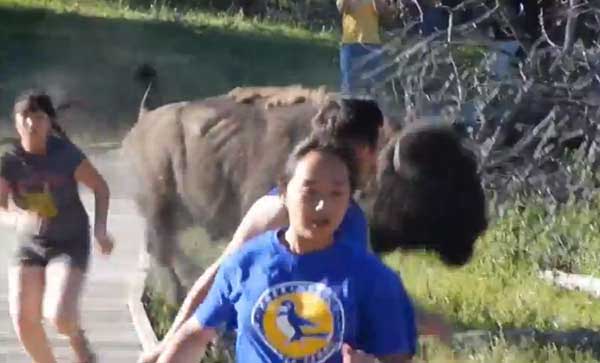
From Staff Reports
The 4th of July weekend will bring crowds of visitors to Yellowstone National Park, and officials are offering a few tips and reminders to help travelers visiting the park over the holiday.
Fireworks of any kind are prohibited in Yellowstone and on all federal lands, including the national forests surrounding the park.
An ongoing norovirus outbreak in the park has caused gastrointestinal illness among some park visitors and employees, but the disease appears to be on the decline in recent days, according to a statement released Monday by the park’s public affairs office.
Visitors are advised that careful sanitation, including frequent and thorough hand washing, is the best way to avoid contracting norovirus.
All roads, campgrounds, lodging, visitor amenities and activities are open for the season. Road construction between Tower Fall and Roosevelt will be halted from 5 p.m. Wednesday, July 3 until 1 p.m. Sunday, July 7, for the holiday weekend.
Park officials recommend that motorists allow for extra travel time to allow for crowded and congested roads. Visitors should stay alert for animals on and near roads, and be prepared to stop for unexpected wildlife sightseeing “jams.”
Seat belt use is mandatory in the park, and a 45-mph speed limit is enforced throughout the park.
Whether along the road or along a hiking trail, to protect wildlife, yourself and other visitors, you need to view animals from a distance of at least 25 yards, and stay at least 100 yards away from bears and wolves.
All visitors traveling in the park away from developed areas should stay in groups of three or more, make noise on the trail, keep an eye out for bears and carry bear spray. Bear spray has proven to be a good last line of defense, if kept handy and used according to directions when a bear is approaching within 30 to 60 feet.
You can protect yourself and Yellowstone’s valuable natural resources by staying on boardwalks in thermal areas. Pets, smoking and eating in thermal areas are also prohibited.
For valuable trip planning information, visit http://www.nps.gov/yell/planyourvisit/index.htm. For current road conditions, call (307) 344-2117. For current camping information, weather conditions and forecasts, call (307) 344-2113. For information on permits and reservations, visit http://www.nps.gov/yell/planyourvisit/feesandreservations.htm.
